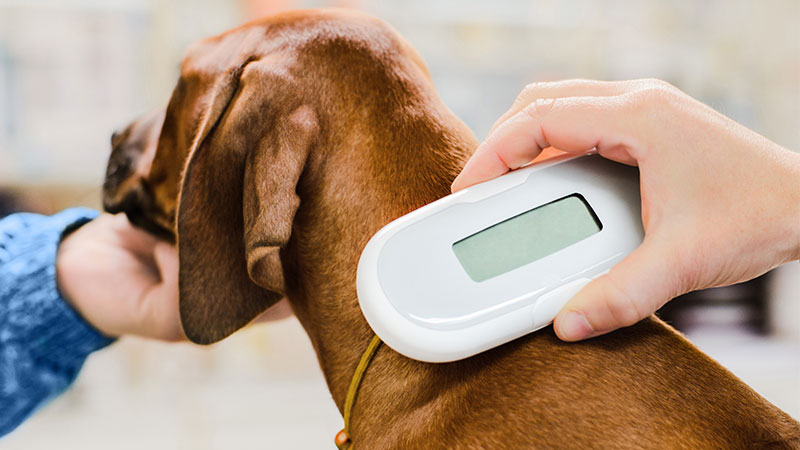A third of cats and dogs will make a break for it at some point. Maybe they’re attracted by a scent, spooked by a sound, or simply testing out an escape artist routine. Whatever their reason for flying the coop, just 1 in 10 of these beloved animals ever find their way back home.
This sad fact is a big reason that so many pet owners are moving beyond traditional identification methods. In addition to tags and collars, they’re equipping their pets with digital IDs in the form of microchips.
Microchipping is painless (for you and your pet)
If you’re welcoming a pet into your home, chances are you’re an animal lover. It’s understandable, then, that you may not want to subject your pet to a painful and stressful surgical procedure unless it is absolutely necessary. Fortunately, the microchipping process is anything but painful or stressful. Implanting the small microchip under your pet’s shoulder blade is a quick, minimally-invasive process that’s no more painful than an injection.
Your vet can implant a microchip during any routine visit. If you’re still concerned about undue stress, they can even microchip your pet while they’re under anesthesia for a spaying or neutering procedure.
Microchipping won’t hurt your finances either. WebMD notes that the procedure and subsequent registration typically costs around $50. If you have wellness coverage with PetPartners, you can be reimbursed towards the cost of microchipping!
Microchipping protects your pet
Pets don’t just get lost. Lots of them get stolen too. The American Kennel Club (AKC) suggests that petnapping is a growing issue with more than 2 million dogs getting stolen each year. Purebreds are especially popular targets for “dog flippers” hoping to make a quick buck. If it’s up-to-date and registered, a microchip makes it significantly more challenging for a thief to get away with such a scheme. While chips don’t include GPS tracking devices, it’s standard procedure for vets to scan a new dog or cat to check for a chip. In doing so, they’ll discover the crime and, soon, you and your pet will be reunited.
Some microchip databases even permit owners to include information related to their pet’s health and medical needs. These won’t just help a dog or cat reunite with their family, but could ensure they don’t go without necessary medication for too long.
Microchipping is the responsible thing to do
There’s a reason that countries like Ireland and Scotland have made pet microchips mandatory. It reduces strain on shelters and other animal control entities while improving the lives of individual pets.
The International Society for Animal Rights (ISRA) has long considered mandatory microchipping a passion project. They believe that making microchips mandatory could be an important step in controlling the “pet overpopulation crisis.” Lost pets who have not yet been spayed/neutered may reproduce freely and further contribute to overpopulation. If they were chipped, these pets could be neutered/spayed and returned to their rightful owner -- with some sort of warning or penalty, if necessary.
Microchipping provides peace of mind
A microchip isn’t a guarantee that a lost dog or cat will return, but it’s about as close as you can get. The AKC reports that a chipped pet is 20 times more likely to reunite with their owners. Parents of microchipped pets can confidently travel with their pets and live without fear of a pet thief’s prowling eyes.
Even better, a single microchip typically lasts a lifetime. It’s possible that one quick procedure and one small payment is all that’s standing between you, your pet, and peace of mind.
Register and check your chip
Great as they are, microchips are just like any other tool. They’re only effective when they’re used properly by informed individuals. Simply getting your pet microchipped isn’t enough to ensure they’ll always find their way back to you. The American Veterinary Medical Association encourages pet owners to take the following precautions to “maintain” their microchips:
- Make sure your pet’s microchip is registered in the manufacturer’s database.
- Ask your vet to scan your pet’s microchip during each visit to ensure it’s still functioning.
- Update your contact information in the manufacturer’s database whenever necessary.
Remember, too, that you shouldn’t consider a microchip a substitute for a traditional ID tag. A collar and tag with accurate contact information is still the quickest and simplest way to help a lost pet find their way home.

